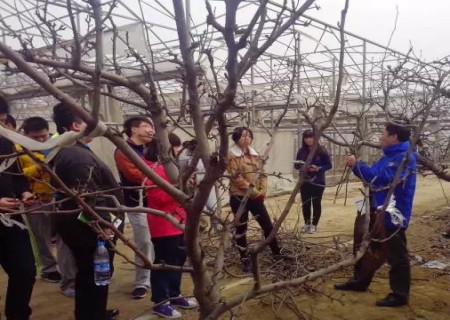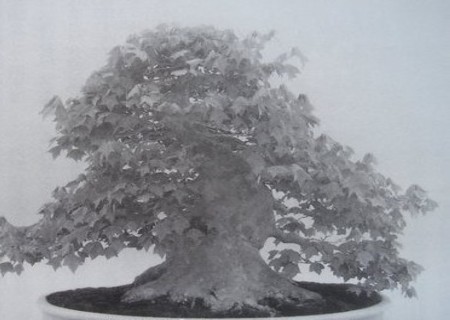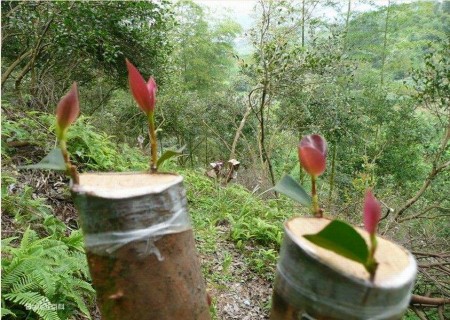Grafting technique of embedded Bud of Pear Tree
Due to the physiological characteristics or improper management of pear varieties, pear main branches (dry) bare legs, resulting in inner and outer density, thin and weak fruit branches, ineffective consumption of nutrients, small fruit, poor quality and low yield. In order to solve this problem, after several years of practice and exploration, we adopt the methods of embedded bud grafting and hard branch grafting in spring, summer and autumn, which effectively solve this problem, and it is simple and easy.

1. Before the pear tree sprouts in spring
On both sides (upper side) of the bare leg branch (stem), one scion (the same variety or other varieties) is alternately grafted every 20 cm. Scion cutting leaves 2-3 buds, preferably a mixture of leaf buds and axillary flower buds. The germinated branches of leaf buds and axillary flower buds should not grow excessively, and they are easy to form fruiting branches. The grafting method is drilling, skin grafting or ventral grafting of twigs.
February and July
Bud grafting or subcutaneous grafting is carried out in the parts where the bare leg stem (branch) needs the fruit branch. Smear the surviving buds or carve buds on top of the buds before sprouting next spring to promote them to sprout and branch.
3. Late September to early October
The grafting method is basically the same as that in spring, but it is better to use axillary flower buds in scions.
Branches with axillary flower buds are used as scions in spring, summer and autumn, and do not use long branches as scions as far as possible, so as to prevent new branches from forming bare legs again.
In addition, for the empty-bore tree whose fruit moves outward, using the overgrown branch on the bare-legged branch to cultivate the "dragon turning back" fruiting branch is to pull the overgrown branch on the bare-legged tree back to the position of empty bore and no branch, and cultivate it into fruiting branch year by year. Finally, the balance of tree potential, hanging fruit, stable yield, high yield, positive fruit and good quality were realized.
For tree species with angular or furrowed branches, such as Chinese chestnut, jujube, or other plant materials, embedded bud grafting is used when the rootstock and ear are difficult to leave the bark.
1. Pick up the buds
The buds on the scion are cut from top to bottom. First cut downward oblique from the upper 1.5~2cm of the bud with a little xylem, and then cut horizontally at 1 cm below the bud to remove the bud slice.
2. Cut the rootstock
At the selected height of the rootstock, take the smooth side of the shade and cut a section equal to the length and width of the buds from top to bottom with xylem. Cut off the upper part of the bark with slightly xylem and leave 0.5cm in the lower part.
3. Cutting scion
Insert the bud into the incision to align the cambium, then stick the remaining part to the bud and tie it with a plastic strip.
Time: 2019-06-09 Click:
- Prev

Illustration of the pruning process of Maple Bonsai
The best viewing period for maple trees is when the new leaves are just unfolded. If all the leaves are removed at the end of summer and a dilute liquid fertilizer is applied, new leaves can grow in about 20 days, which adds another best viewing period. Maple trees have strong germination and often grow new buds on their trunks, such as buds and over-dense branches that are not needed for modeling.
- Next

Cutting and grafting techniques of Pear trees
Pear branch grafting can be divided into split grafting, tongue grafting, leaning grafting and other forms, the most commonly used is split grafting, cutting grafting. Cutting is often carried out in early spring (mid-late March) when trees begin to sprout but have not yet sprouted. The diameter of the rootstock should be 2 cm to 3 cm, and the rootstock should be cross-cut at 2 cm from the base of the branch.
Related
- Fuxing push coffee new agricultural production and marketing class: lack of small-scale processing plants
- Jujube rice field leisure farm deep ploughing Yilan for five years to create a space for organic food and play
- Nongyu Farm-A trial of organic papaya for brave women with advanced technology
- Four points for attention in the prevention and control of diseases and insect pests of edible fungi
- How to add nutrient solution to Edible Fungi
- Is there any good way to control edible fungus mites?
- Open Inoculation Technology of Edible Fungi
- Is there any clever way to use fertilizer for edible fungus in winter?
- What agents are used to kill the pathogens of edible fungi in the mushroom shed?
- Rapid drying of Edible Fungi

